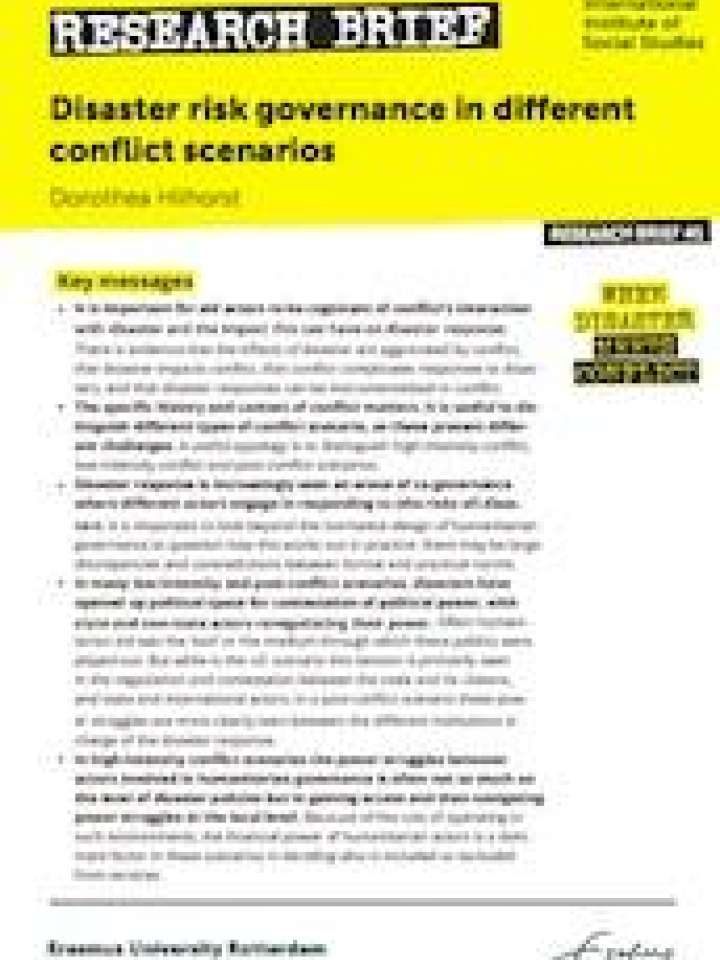Disaster risk governance in different conflict scenarios
Previous research has provided two important insights on the effects of disasters in conflict situations. First, their effects are related to previous conflict histories. Whether disasters will trigger conflict is mostly dependent on pre-existing, country-specific conditions, especially the resilience of a state’s institutions to crises. Second, how governments handle disasters influences their impacts on conflict.
This means that the specific history and context of conflict is important and should be taken into account in any disaster response. This research brief hence makes a distinction between types of conflict with regard to their intensity and some common features that are distinguishable for different scenarios.
Arguing that a more rigorous understanding of disaster-conflict dynamics across types of conflict is needed, this research brief distinguishes three analytical situations: high-intensity conflict, low-intensity conflict and post-conflict. The brief uses this categorization in the systematic analysis of specific patterns of interaction in disaster risk governance (between international and local aid and society actors) in these different scenarios.
The brief concludes that disasters shape conflict and vice-versa, but linking the two without recognising the nuances of the type of conflict and disaster can result in ill-equipped policies and practices. The analytical categorization of the three types of conflict scenarios, while containing overlaps, may help intervening actors to attune to specific challenges in their area of work. In all three situations, disaster governance is complex and multi-layered, but the power and room to manoeuvre differs in each scenario.
Explore further
